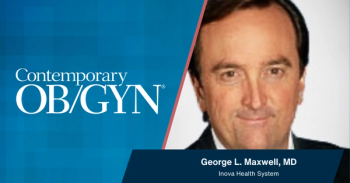
Study highlights need for interventions to prevent postpartum smoking relapse
Smoking cessation during pregnancy not only reduces pregnancy complications but also lowers the risk of relapse and new smoking initiation in the first postpartum year, according to a recent study.
Interventions may be implemented to prevent smoking relapse and initiation in the first year postpartum, according to a recent study published in JAMA Network Open.1
According to investigators, smoking cessation during prenatal care allows for the prevention of smoking-related pregnancy complications and reduction of secondhand exposure among infants and children. Long-term abstinence may also be promoted through cessation during pregnancy.1
The benefits of smoking cessation during pregnancy were discussed by Todd Rosen, MD, maternal-fetal medicine specialist at Rutgers Health, in an interview with Contemporary OB/GYN.2 Rosen noted a significantly increased risk of preterm birth linked to smoking during pregnancy, which is the primary cause of infant morbidity and mortality.
Rosen also highlighted data linking smoking during pregnancy to an increased risk of stillbirth. This data was based on over 100 million US births and found reduced odds from never smoking or quitting during pregnancy.2
According to 2021 survey data, 56% of people who smoke quit during pregnancy, with a postpartum smoking rate of 7% vs a prepregnancy rate of 12%.1 However, investigators said “population-level data on longer term relapse after pregnancy is limited” and conducted a study to evaluate smoking patterns through 1 year postpartum.
Live birth data was obtained by linking birth certificates, the Pregnancy Risk Assessment Monitoring System, and the Postpartum Assessment of Health Survey. Smoking patterns were assessed based on age, race and ethnicity, insurance at birth, and geography.1
Maternal smoking was measured at preconception, during pregnancy, early postpartum, and late postpartum. These periods were defined as 3 months before pregnancy, last 3 months of pregnancy, mean 3.9 months after childbirth, and mean 13.1 months after childbirth, respectively.1
Instances of respondents discussing smoking cessation during prenatal and postpartum visits were also reported. Stata version 18 (StataCorp) was used to assess the data.1
There were 4547 postpartum individuals included in the final analysis, 26.4% of whom were aged 25 to 29 years, 32.4% 30 to 34 years, 14.8% were Black, and 54% White. Commercial insurance was reported in 58.4% and living in and urban or suburban area in 89.1%.1
Smoking rates of 14.6%, 7.2%, 7%, and 11.5%, respectively, were reported during the preconception, pregnancy, early postpartum, and late postpartum periods. Of participants, 83.5% never smoked, 5.1% always smoked, 3.6% persistently quit during pregnancy, 3.8% had postpartum relapse, 1.9% initiated postpartum, and 1% quit postpartum.1
The odds of never smoking were increased among patients aged 18 to 24 years vs those aged at least 30 years. However, this population was also more likely to relapse postpartum. The highest rate of always smoking was 7.1% in White patients, but Black patients were more likely to initiate smoking postpartum at 4.8%.1
Rates of smoking in rural areas was 12.4% vs 4.2% in urban and suburban areas, and 10% of Medicaid enrollees were always smokers vs 1.5% of commercially-insured patients. The rates of quitting and resuming were 5.5% vs 2.6%, respectively. Medicaid-insured individuals had higher smoking rates at all time points.1
According to investigators, “these findings suggest that there is substantial opportunity to prevent smoking relapses and initiation in the postpartum year, which would promote the short- and long-term health of families.” They recommended smoking counseling as a key component of postpartum care.1
Reference
- Allen H, Daw J. Perinatal smoking patterns from preconception to 1-year post partum. JAMA Netw Open. 2025;8(1):e2454974. doi:10.1001/jamanetworkopen.2024.54974
- Krewson C. The impact of smoking cessation on pregnancy outcomes. Contemporary OB/GYN. May 2, 2024. Accessed January 20, 2024.
https://www.contemporaryobgyn.net/view/the-impact-of-smoking-cessation-on-pregnancy-outcomes
Newsletter
Get the latest clinical updates, case studies, and expert commentary in obstetric and gynecologic care. Sign up now to stay informed.










